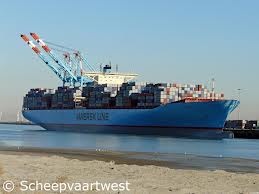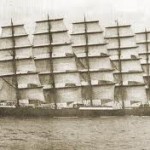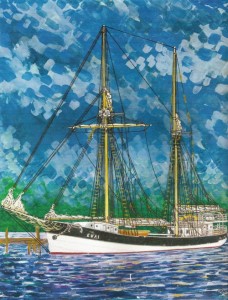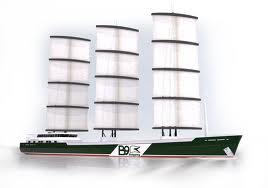The Permaculture Research Institute has published The Long Emergency and Towns That Food Saved
Waking Times has re-posted “The Long Emergency, Permaculture, and Towns that Food Saved
LIfe Wise Be the Change has reprinted The Long Emergency, Permaculture and Towns that Food Saved.
We live in dangerous times, when economic collapse, climate chaos, and peak oil 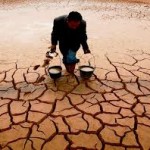 threaten the foundations of society, abundance, and all we hold dear. “Business as usual” will no longer suffice, because that way leads to certain pain, peril and impoverishment.
threaten the foundations of society, abundance, and all we hold dear. “Business as usual” will no longer suffice, because that way leads to certain pain, peril and impoverishment.
Unspeakable acts of violence like the slaughter at the Sandy Hook school or at the Boston Marathon bombing; natural disasters like Katrina and Sandy; economic uncertainty; technical failure; “peak everything;” and climate change can offer opportunities for either despair and disengagement or innovative collaboration. In the aftermath of such disasters communities often experience a surge of purposefulness to deal with the crisis. As a result, there is a need for better understanding of the specific and general resilience of communities, ecosystems, organizations, and institutions to cope with change.
This post examines the use of Permaculture principles to harness purposefulness for collaborative planning for resilience and regeneration by examining two communities that are surviving and in some cases thriving by building on the  “sense of purpose” that occurs after a disaster or downturn.
“sense of purpose” that occurs after a disaster or downturn.
This collaboration can take many forms including but not limited to defining “place” and by building consensus. In order to work there needs to be agreed upon definitions of place, resilience, regeneration, and Permaculture.
“Spirit of place symbolizes the living ecological relationship between a particular location and the persons who have derived from it and added to it the various aspects of their humanness. The reason we are now desecrating nature is not because we use it to our ends, but because we commonly manipulate it without respect for the spirit of place.” – Rene Dubos
“Where sustainability is abstract, Place is intimate, personal, filled with meaning and potential. Place arises from the rich connections among the earth, local nature and spirit. Regenerative development captures the unique rhythm and spirit of a place, partnering people and their place to create enduring value for all life. It helps people truly experience place, growing the caring required to make sustainability real.” Resilience may be defined as: “The capability to anticipate risk, limit impact, and bounce back rapidly through survival, adaptability, evolution, and growth in the face of turbulent change. Regeneration is the process of “building local capacity for sustainability that endures.”
The Long Emergency: Surviving the Converging Catastrophes of the Twenty-first Century is a book by James Howard Kuntsler written in 2005 explores the consequences of a  world oil production peak, coinciding with the forces of climate change, resurgent diseases, water scarcity, global economic instability and warfare that causes chaos for future generations. Kunstler argues that the economic upheavals caused by peak oil will force Americans to live in more localized, self-sufficient communities.
world oil production peak, coinciding with the forces of climate change, resurgent diseases, water scarcity, global economic instability and warfare that causes chaos for future generations. Kunstler argues that the economic upheavals caused by peak oil will force Americans to live in more localized, self-sufficient communities.
Permaculture is method of building on the “sense of purpose” that can be born from crisis resulting in a “new localism,”. Permaculture is “Consciously designed landscapes which mimic the patterns and relationships found in nature, while yielding an abundance of food, fiber and energy for provision of local needs. People, their buildings and the ways in which they organize themselves are central to Permaculture. Thus the Permaculture vision of permanent or sustainable agriculture has evolved to one of permanent or sustainable culture.” The core tenets of Permaculture are:
- Take Care of the Earth: Provision for all life systems to continue and multiply. Without a healthy earth, humans cannot flourish.
- Take Care of the People: Provision for people to access those resources necessary for their existence.
- Share the Surplus: Healthy natural systems use outputs from each element to nourish others. We humans can do the same. By governing our own needs, we can set resources aside to further the above principles.
Consciousness of place and helping to shift belief systems can be encouraged by applying the common sense Permaculture ethics of care for the earth, care for people, and fair share – and by application of P.A. Yeomans’ functional relationship analysis to map, examine, and analyze the community or bioregion’s climate, landform, water, access and circulation, micro-climates, vegetation and wildlife, buildings and infrastructure, zones of use, soil fertility and management, and aesthetics and culture to 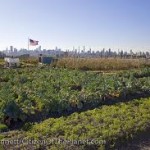 give us the basic information we need to plan for more resilient communities and bioregions. The following are the basic tenets for community and bioregional sustainability. Communities can take advantage of the sense of purpose that results from crisis by exploring, and if there is consensus, implementing some or all of the following:
give us the basic information we need to plan for more resilient communities and bioregions. The following are the basic tenets for community and bioregional sustainability. Communities can take advantage of the sense of purpose that results from crisis by exploring, and if there is consensus, implementing some or all of the following:
- Operate as a self-contained economy with resources found locally.
- Be carbon-neutral and become a center for renewable energy production.
- Achieve a well-planned regional and local transportation system that prioritizes movement of goods and people as follows: walking first, then cycling, public transportation, and finally private and commercial vehicles.
- Maximize water conservation and efficiency of energy resources through conservation.
- Design and construct a zero-waste system.
- Restore environmentally damaged urban areas by converting brownfields to greenfields.
- Ensure decent and affordable housing for all.
- Improve job opportunities for disadvantaged groups, and allow seniors and young people to play useful and meaningful civic roles.
- Support local agriculture and produce distribution.
- Support cooperatives and worker-owned commercial and manufacturing enterprises.
- Promote voluntary simplicity in lifestyle choices, decreasing material consumption, and increasing awareness of the environment and sustainability
Detroit, MI, Hardwick, VT, and Facing The “Long Emergency”
Detroit was once one of the wealthiest cities in the world and now is the face of an almost dystopian failure while the small town of Hardwick, VT grappled with a changing economy and the loss of a once thriving regional industry. Both of these communities are examples of “towns that food saved.”
Hardwick, VT population is 3000 and it is the commercial center for the region’s farming 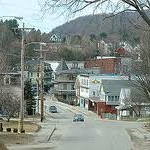 population. Granite quarrying was the predominant business after the civil war and railroads were built to get the granite to the cities in which it was used for city halls and post offices. Hardwick is almost the antithesis of Detroit, it is almost exclusively white and rural, but two factors connect the two – agriculture and median family income.
population. Granite quarrying was the predominant business after the civil war and railroads were built to get the granite to the cities in which it was used for city halls and post offices. Hardwick is almost the antithesis of Detroit, it is almost exclusively white and rural, but two factors connect the two – agriculture and median family income.
Hardwick came to national attention as a result of a 2008 New York Times article , Uniting Around Food to Save an Ailing Town, that said in part, “This town’s granite companies shut down years ago and even the rowdy bars and porno theater that once inspired the nickname “Little Chicago” have gone.” Continue reading



